Last updated on May 10th, 2024
Chaotic, elegant and fascinating, Palermo takes me by surprise
by Carolyn Ray
It’s the classical music that catches my attention on the Via Cassaro, the oldest street in Palermo, Sicily. A crowd is gathering around a young piano player, as families, tourists and horse-drawn carriages mesh into a steady flow of traffic, merging with food carts and performers. I weave my way through the crowd to get a better view, enjoying all the vibrancy on the street.
Here, in Palermo’s old town, all this hustle and bustle make me feel like I’ve just stepped into a street party. It’s chaotic and noisy, but there’s something about it that captures my heart. There’s nothing artificial here, particularly in January, when there aren’t many tourists. A few steps off the main street, it’s easy to see buildings affected by heavy bombing in World War II. With its port, shipyards and proximity to North Africa, Palermo was the second most bombed city in southern Italy after Naples. Hundreds of historic buildings, including palaces and churches, suffered damage. In 2018, it emerged as an “Italian
On each corner of the octagonal intersection around me, there are four separate buildings, each with its own impressive façade. Designed by the Romans, the Quattro Canti, or ‘four corners’, connects Palermo’s two main streets, the ancient Corso Vittorio Emanuele and the newer Via Maqueda. Each corner has a different feature: the first level has four Baroque fountains representing the four seasons. The second has statues of four Spanish kings. On the third level, the highest, are the four female patron saints of the city. Everywhere I look, it’s a mish-mash of Roman fountains, medieval churches and Phoenician, Baroque, Byzantine, Arab, Christian and Norman influences, making Palermo one of the most ancient and fascinating places in Europe.
Get stories like this delivered directly to your inbox – join the mailing list here!
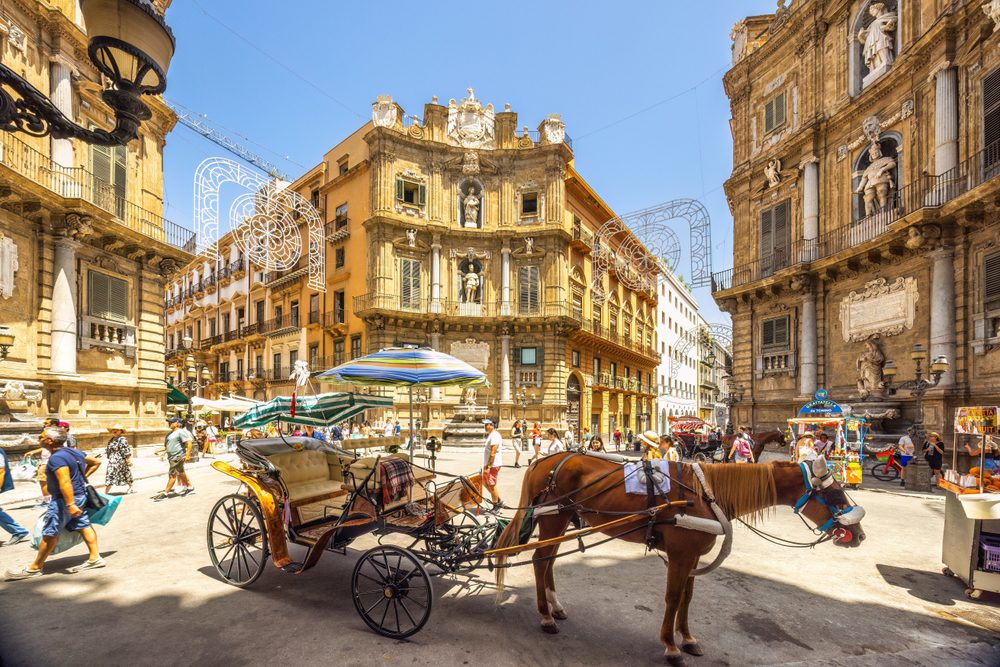
Is Palermo, Sicily safe for women?
Palermo has a long association with the Sicilian Mafia, known as Cosa Nostra, which exerted influence over the city’s social fabric for decades, and still does, according to those I spoke with. While I didn’t experience any crime, I heard stories of pickpocketing, so I kept my cross-body bag close.
“Sicily is a safe place to stay for anyone, including single female travelers,” says Angela Macaluso, CEO & Travel Designer with Sicily & Italy By Experts, a luxury DMC in Italy, who organized my stay in Palermo. “But Palermo is a big city, not a small village. And as with all large towns, there are some areas that are safer than others.”
First, Macaluso says, women should select an accommodation in the central part and spend some more euros to be sure you are in a very good hotel. To that end, Macaluso arranged for me to stay at Palazzo del Poeta, a woman-owned boutique hotel right in the centre of the old town. Beautifully renovated along the theme of music and poetry, this luxury hotel has many special touches, including a cozy living room, a library, a family-style eating area and a piano.
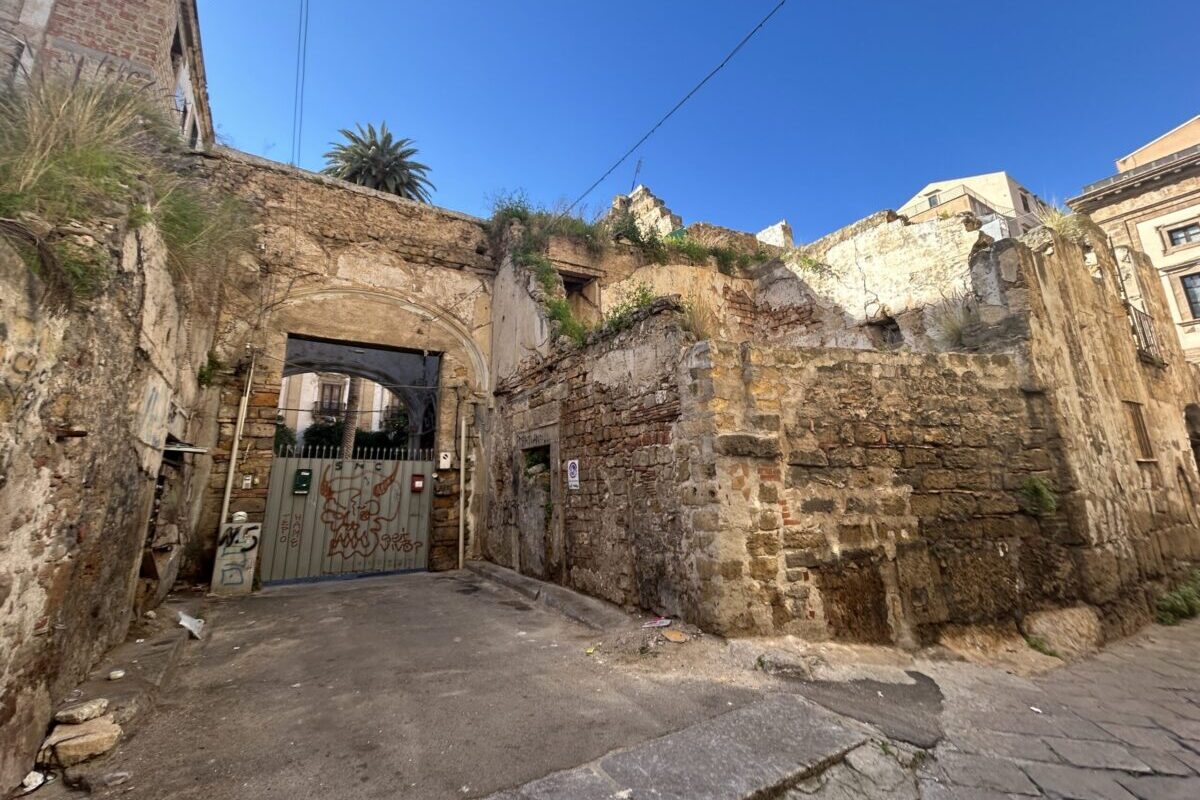
The ‘soul of Palermo’, in its historic old town
Looking north from Quattro Canti, I can see one of the city gates, the Porta Nuova, which features Turkish figures, a testament to its past. If I walk in that direction, there’s the Royal Palace, Palatine Chapel and Cathedral of Palermo. The other way features Europe’s largest opera house, Teatro Massimo, and cathedrals and convents, including the formidable Santa Catarina and Fontana Pretoria, otherwise known as ‘the Fountain of Shame’, for the money it cost to bring it to Palermo, not to mention the over-the-top High Renaissance style.
“The “Palermitani” (people from Palermo) are extremely welcoming,” says Macaluso. “The historical center is where you will find the real soul of the town. When you walk in the streets or crowded markets, you are absorbed in a mix of civilizations and incredible contrasts (arabesque domes, byzantine mosaics, markets, baroque churches, palms).
Like many Catholic countries, Palermo has its own patron saint. Here, it’s Rosalie, who escaped a marriage of convenience by hiding on Mount Pellegrino in the 12th century. Four hundred years later, in 1624, the townspeople dug up Rosalie’s remains and paraded her bones throughout the infested streets, which ended the plague. Every July, Saint Rosalie is celebrated and her chariot, in the shape of a ship, is pulled through the city.
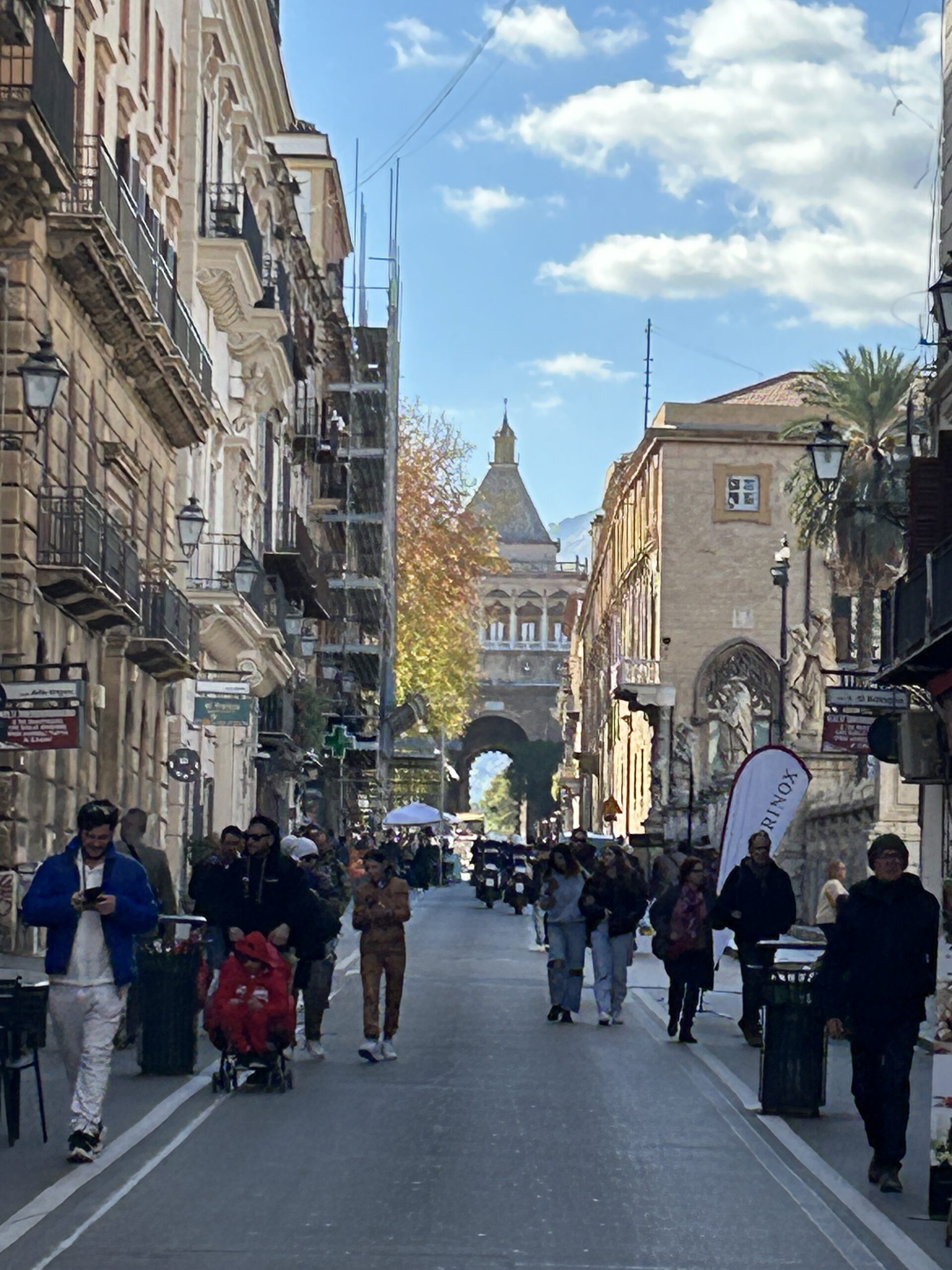
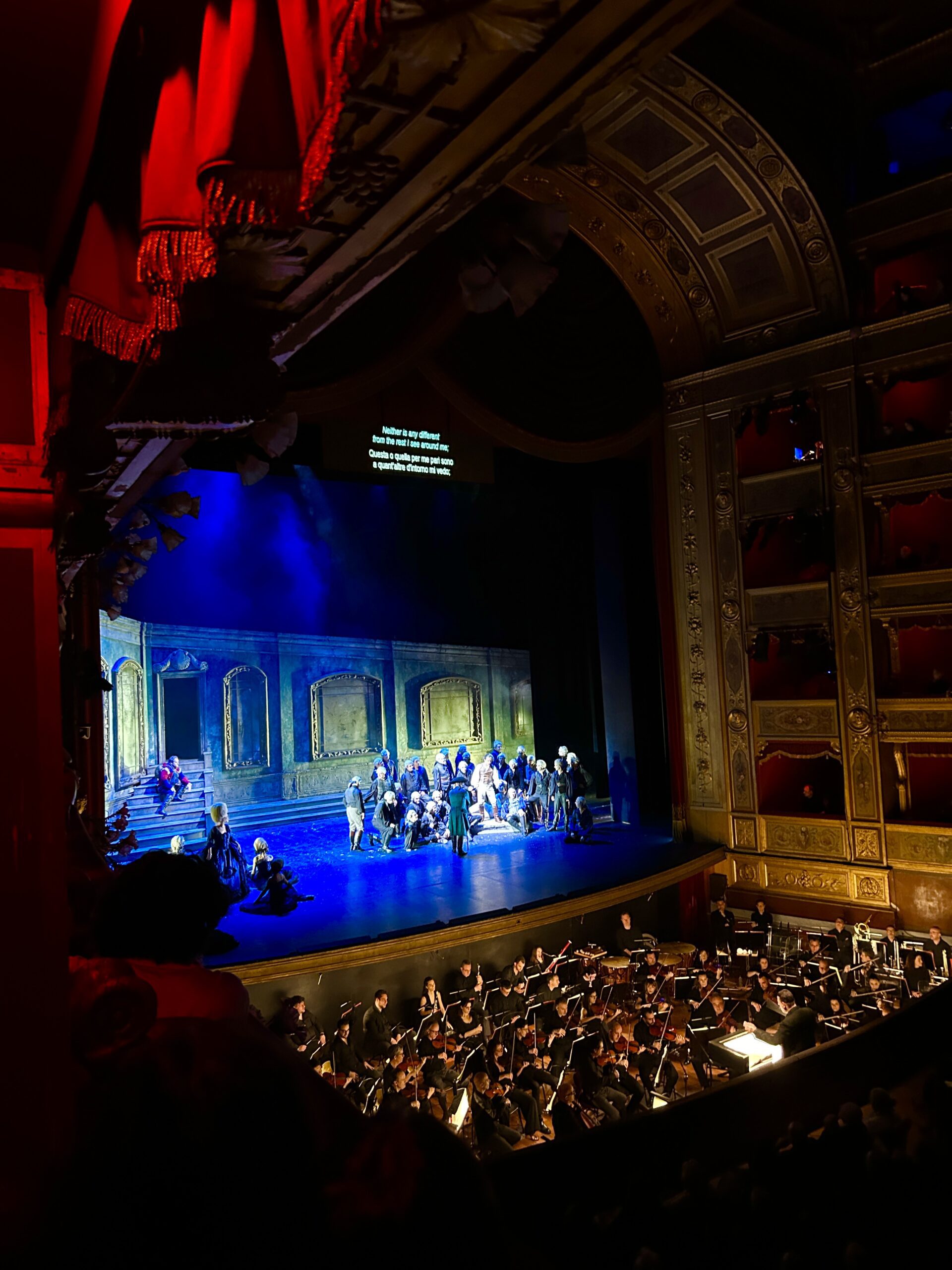
Palermo in the low season
It’s January, a time when Palermo has very tourists, and before cruise ship passengers flood the city in the spring, arriving at the main port just a 10-minute walk from the old town.
But fewer people doesn’t mean you won’t meet someone you know. One afternoon, I am sitting at an outside café. Suddenly I hear, “Ostuni! Ostuni!” from a man pointing vigorously at himself, speaking rapidly in Italian. I look at him for a moment and realize he is the owner of the coffee shop in the small village of Ostuni, where I sipped a cappuccino every morning in the main square a few weeks earlier. We laugh and say hello again. Isn’t that the joy of off-season travel?
Macaluso, who lives in nearby Cefalú, says that Sicily, in general, is a year-round destination, and that Palermo in winter is charming because of the theatre season.
“My favourite months are from March to early June and September to early November, which are generally considered the best times to visit Palermo,” she says. “During these months, the temperatures aren’t as sweltering as they are in the summer months, and the region isn’t as busy with tourists as it is during the summer.”
Another benefit of off-season travel is that you can easily pop into one of the largest opera houses in Europe at the last minute. When I visit the Teatro Massimo, it is the final day of Rigoletto, the famous story of the Duke of Mantua, his hunch-backed court jester Rigoletto, and Rigoletto’s daughter Gilda. Enjoying my first Italian opera in cushy red velvet seats, I forget that I don’t speak Italian, and enjoy the show. Get tickets here.
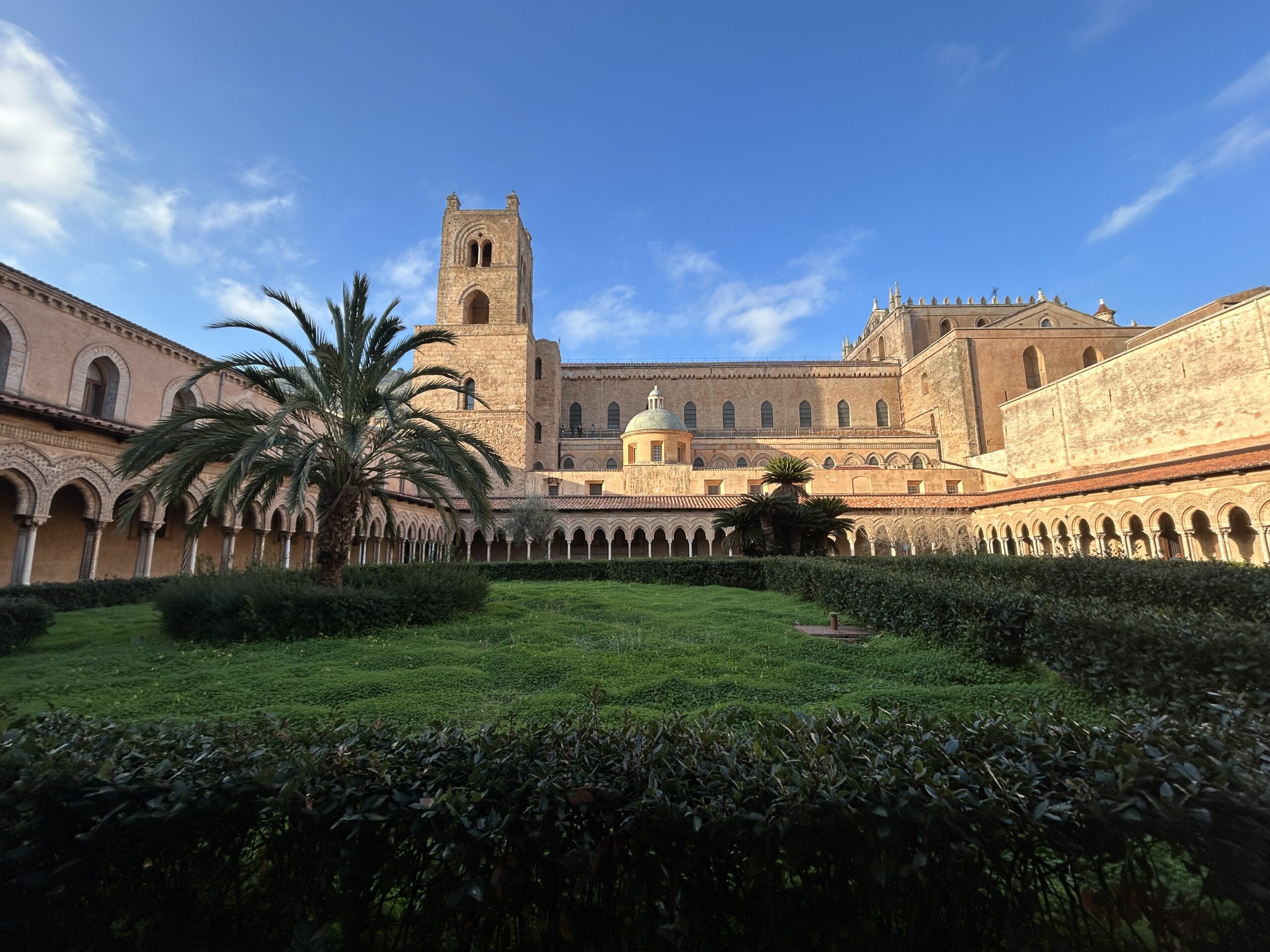
Palermo’s churches and cathedrals
The churches and cathedrals in Palermo are simply astonishing and have to be seen to be believed.
Without question, Monreale Cathedral is one of the world’s greatest treasures and a national monument of Sicily. They call it the cathedral of light, and for good reason. Never have I seen anything like it. A UNESCO World Heritage site, it was built in 1174 by William of Sicily.
Stepping into this 70,000-square-foot Norman building literally took my breath away. Its Arab, Byzantine and Norman/French styles, with solid gold paintings, glass mosaics, marble fountains and a cloister rival any other cathedral I’ve ever seen. Over its three stories, the breathtaking mosaics tell the story of the miracles of Christ, the life of Christ, and the lives of Saints Peter and Paul. (Find a tour of the Cathedral here).
The Cathedral of Palermo is in the oldest part of Palermo, where the Phoenicians, Romans, Byzantines and Arabs had previously built their own places of worship. The more modern cathedral was erected in 1185 by a Norman archbishop of Palermo over an earlier Byzantine Basilica that was later turned into a mosque by the Arabs after their conquest of the city in the 9th century.
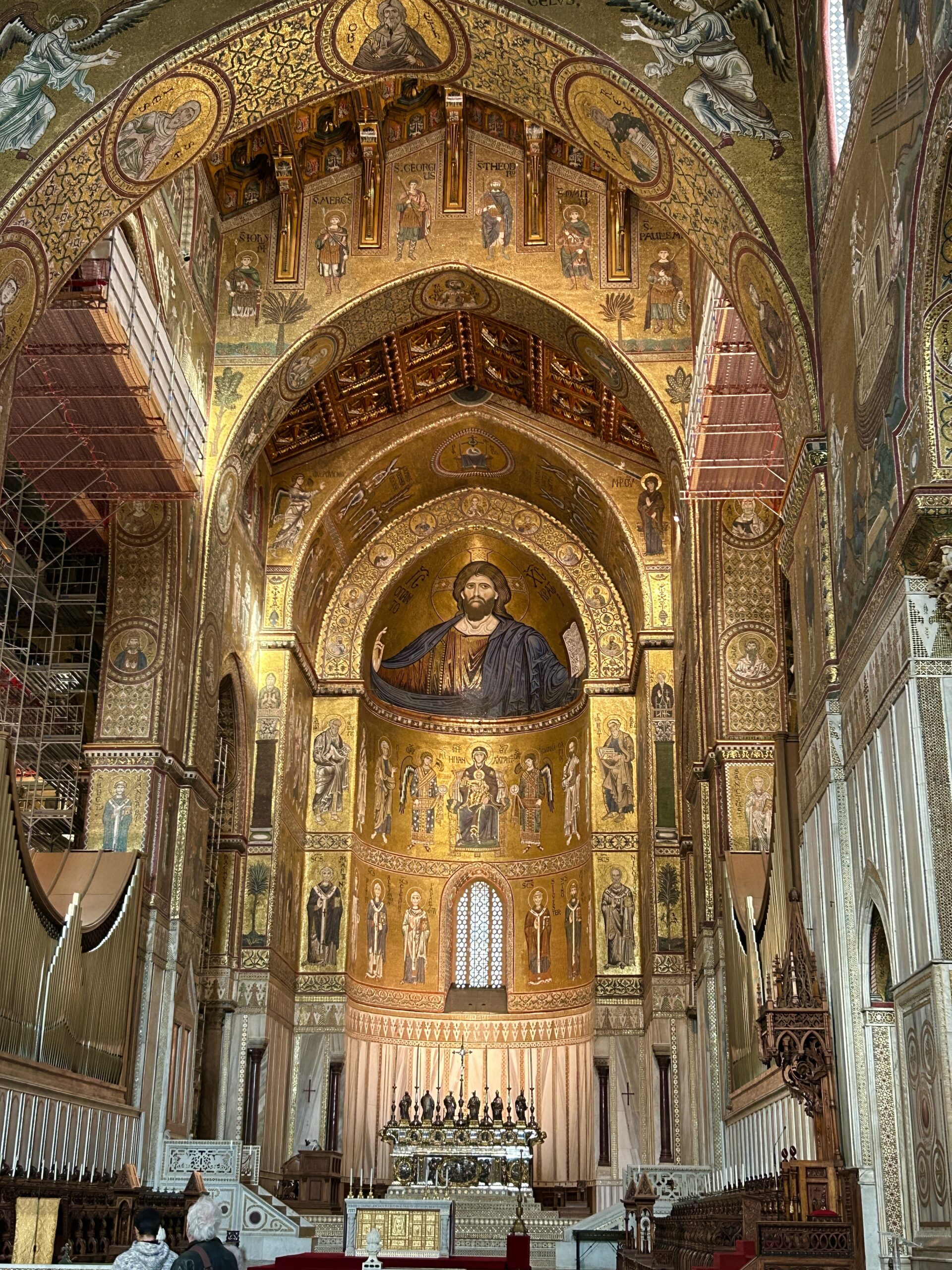
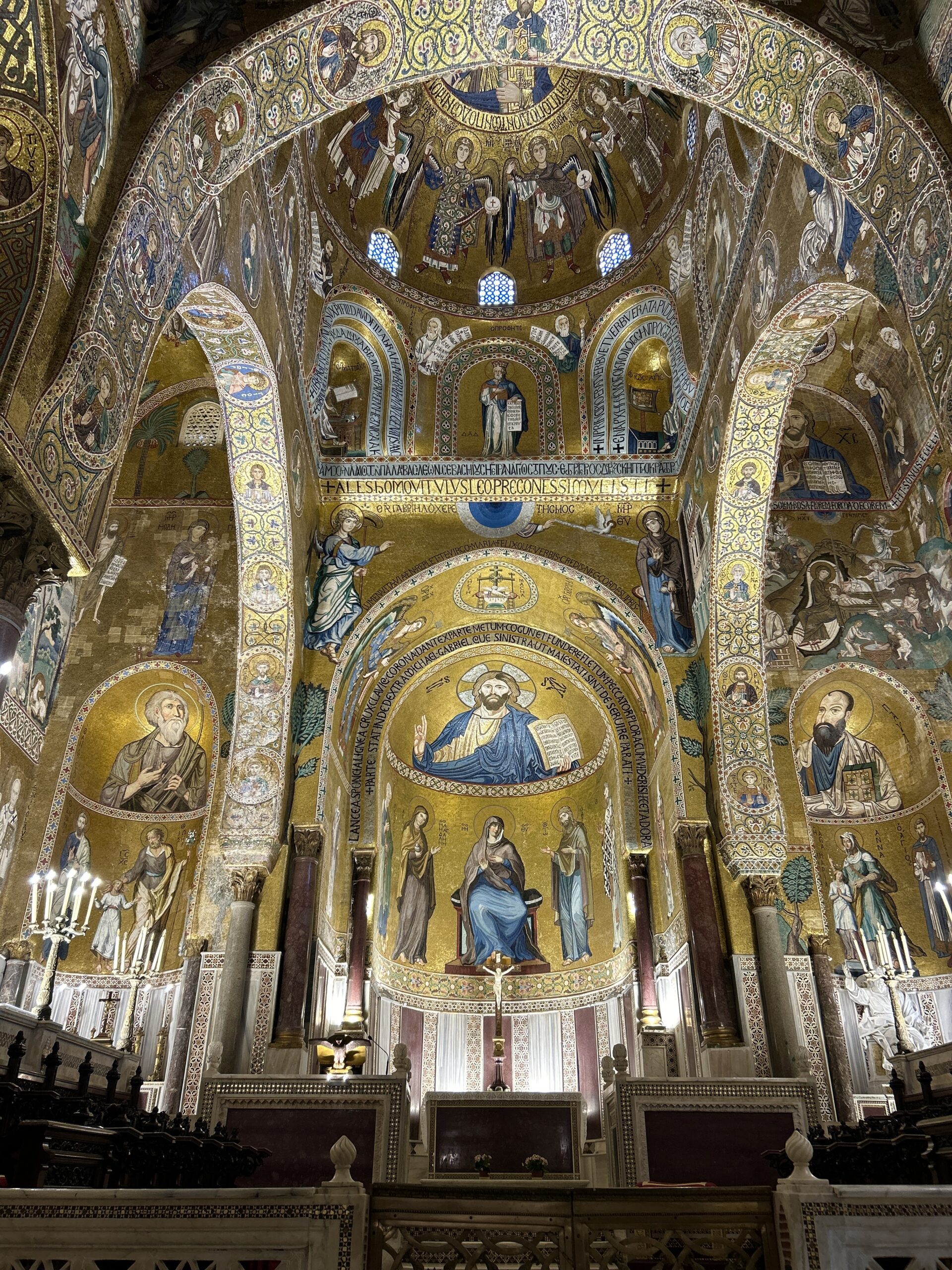
The Church of St. Mary of the Admiral (Santa Maria dell’Ammiraglio) or Martorana, is startlingly beautiful with its original Byzantine mosaics, Islamic inscriptions on the pillars and golden mosaic interior. Next to this is The Church of San Cataldo (Chiesa di San Cataldo), Built in 1160 during the Norman period, it still retains its original forms with the three red Arabic domes. The inside is very simple, with three naves and six columns, and an original mosaic floor.
Santa Catarina, or Saint Catherine of Alexandria Church, has some of the best views in Palermo from the rooftop. In 1310, the rich Benvenuta Mastrangelo in her last will endowed the foundation of a female Dominican convent. The monastery was dedicated to Saint Catherine of Alexandria and the nuns were sheltered from the public by metal grates. Standing behind those grated windows reminded me how precious women’s rights are to uphold.
The Palatine Chapel or Capella Palatine, located in the Royal Palace, is similarly adorned to Monreal Cathedral but on a much smaller scale. Dedicated to St. Peter and St. Paul, it was consecrated in 1140 and beloved by locals.
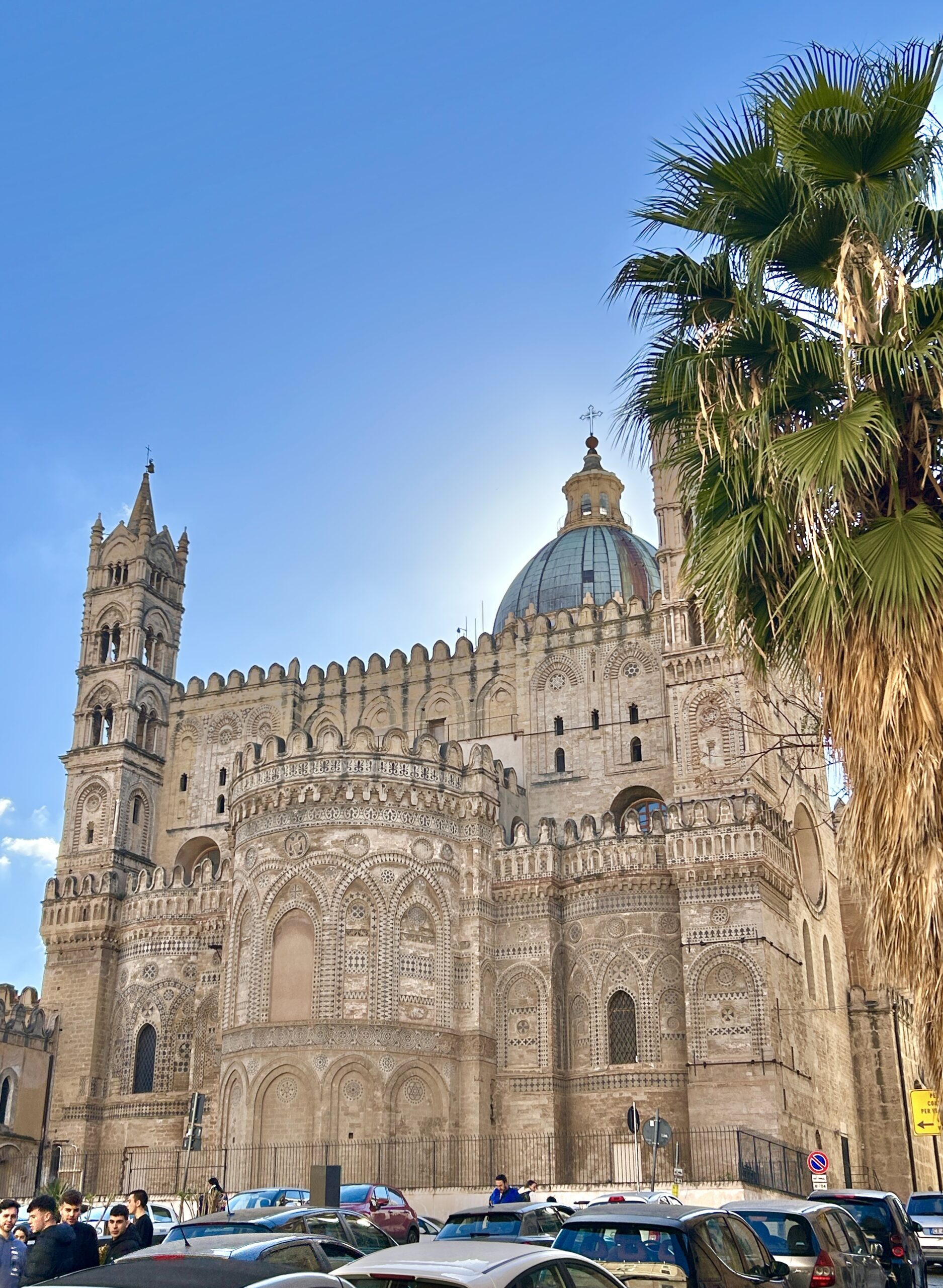

Sicilian food is a blend of cultures
Palermo is famous for its food. The ingredients are a fusion of many cultures, notably Arabic and Italian. For example, lemons, oranges, pistachios and sugar cane were brought to Sicily by the Arabs. Some of the most common ingredients include eggplant, fresh pasta, pesto, sardines, swordfish, olives, capers and artichoke, all of which I love. And yes, of course, the granita and gelato, which come in flavours like lemon and pistachio!
I wasn’t an eggplant lover before Palermo, but I learned to love it at my first dinner at Ristorante Pizzeria Italia, run by Lea and her family. (Address: Via Orologio 54, make a reservation in advance.) While in the area, stop by Ideal Caffe Stagnito, a fourth-generation family-owned shop, for some ‘green coffee’ topped with fresh pistachios. Here, you’ll see black and white photographs by Letizia Battaglia, who was married to the owner’s son and documented years of Palermo’s mafia violence.
The bustling Mercato del Capo market is the perfect place for a street food tour. Just a short walk from the main street, I met Chef Vincenzo Clemente of Cin Cin, a well-known Palermo restaurant. Walking through the crowded morning market, we shopped for a cooking class and stopped at various booths to try “panelle” (chickpea fritters) and arancini (deep-fried rice balls). Fortunately for me, the pane con la milza or u pani c’a meusa (bread with spleen) shop wasn’t open. Not sure I am ready for that experience yet!
The secret of the cloister
Sicily’s baking, even though it has its roots in ancient times such as the Greek colonization or the Arab domination, was born in medieval times, in cloistered convents. From 1311 to 2014 the Santa Catarina Convent was the home of Dominican cloistered nuns, and today, people can buy cakes and pastries done in the authentic way.
If you think you’ve had delicious cannoli’s in the past, I challenge you to try one at the pastry shop in the monastery, “I segreti del Chiostro”. It is world famous for its pastries, and you absolutely must damn the calories and enjoy an authentic cannoli made with sugary marzipan ricotta. The courtyard is an oasis, with views of the private rooms and balconies where the nuns from affluent families lived.
Palermo’s energy, heartbeat and culture enthralled me. I hope to return soon and stay longer.
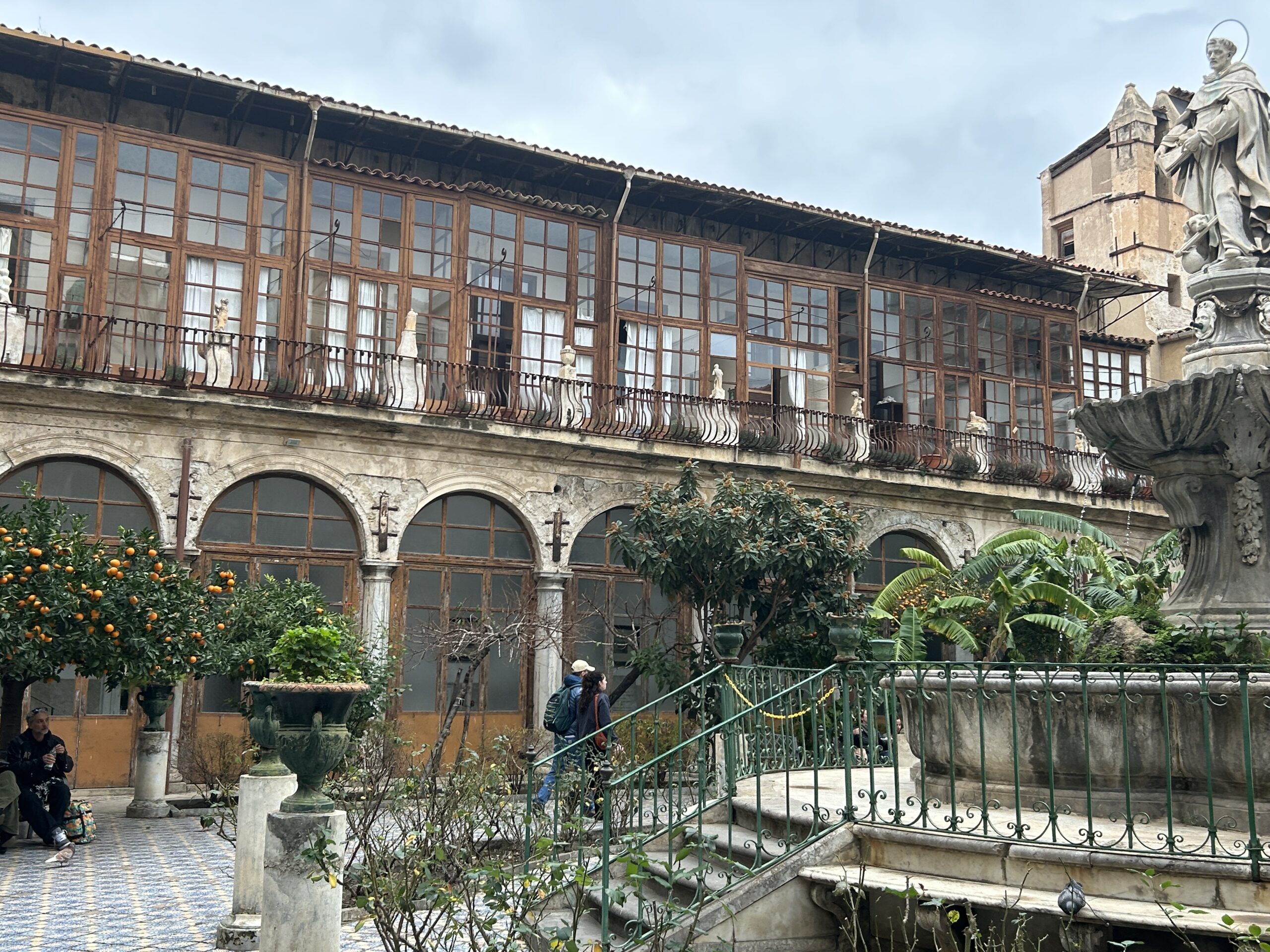
Disclaimer: During the holiday season, I travelled at my own expense, although Angela Mancuso of Sicily by Experts assisted me with my itinerary in Sicily, for which I paid a discounted fee. I highly recommend Angela if you’re planning your own travels there, whether solo, in a group or need a custom itinerary.
How to get to Palermo, Sicily
While I had hoped to take the train from Puglia, it just wasn’t feasible, so I flew RyanAir from Bari to Palermo. Check flights here. Renting a car is also an option. Find a rental car here.
Palermo is a good hub for day trips. I took the train to Céfalu and Agrigento from the train station, which is about a 10-minute walk from the downtown area. Find train tickets on Trainline here.
Where to stay
There are many charming boutique hotels in the historic centre. I stayed at the beautifully designed, woman-owned Palazzo del Poeta in the heart of Palermo. Find other places to stay on Booking.com here.
Macaluso also recommends that women stay in nearby Cefalù, which is an easy day trip by train to Palermo. It’s her hometown, and when I visit for an afternoon, we explore the quiet back streets, Cefalù Cathedral, views of the ocean and enjoy a delicious lunch at La Galleria, which has a lovely outdoor patio. In the low season, there’s a population of about 14,000. We tour the near-empty beach area, medieval laundry, lavatoio medievale, where women gathered to wash clothes in a fresh spring until just recently. TV shows and movies such as The White Lotus and Indiana Jones’ Dial of Destiny were filmed here. Find a tour here.
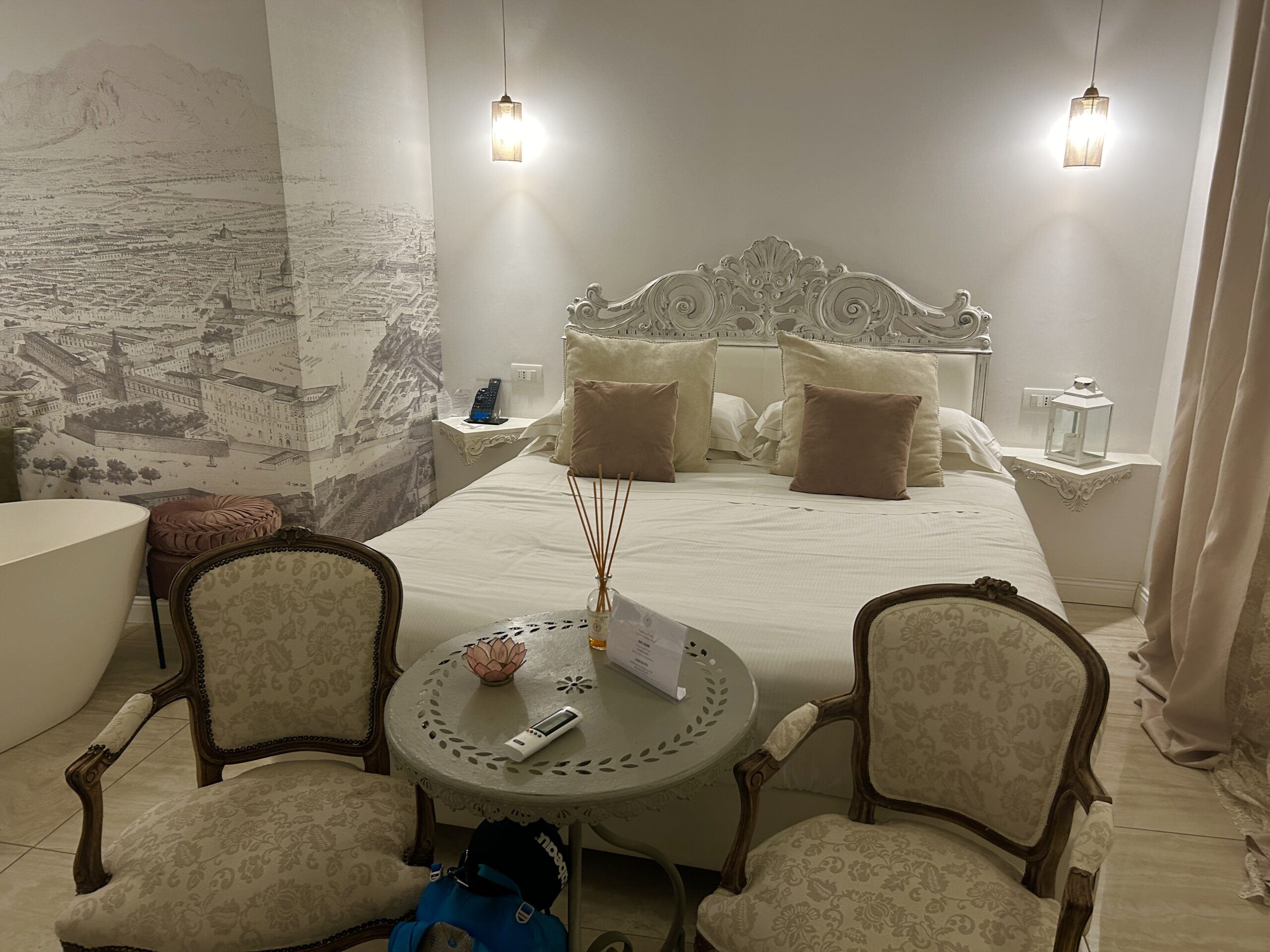
The luxurious Palazzo del Poeta hotel in Palermo / Photo credit Carolyn Ray
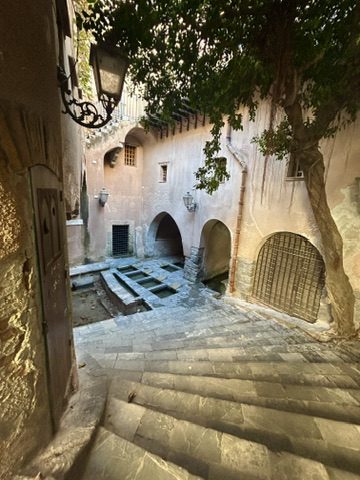
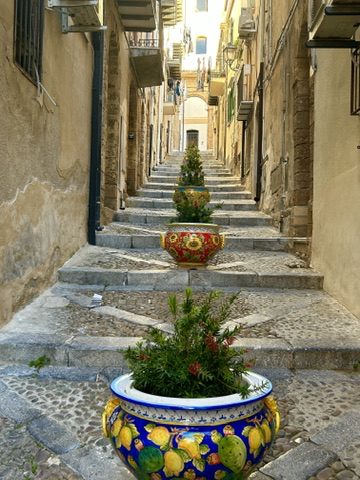
Read More about Italy
Will Travel for Food: Food Tours for Solo Women
Not only do food tours give insight into a culture, they are a great way for solo women to connect with locals and other travellers.
Ostuni, Italy: Wanders in Puglia’s Magical ‘White City’ in the Off Season
Off-season adventures in the magical ‘white city’ of Ostuni, in Puglia, Italy, which overlooks the Adriatic Sea and olive farms.
Blissfully Lost in Lecce: A Baroque Jewel in Puglia, Italy
Called the ‘Florence of the South’, it’s easy to get lost in Lecce, Italy with its winding cobblestone streets, palazzos, archeological museums and Roman ruins.

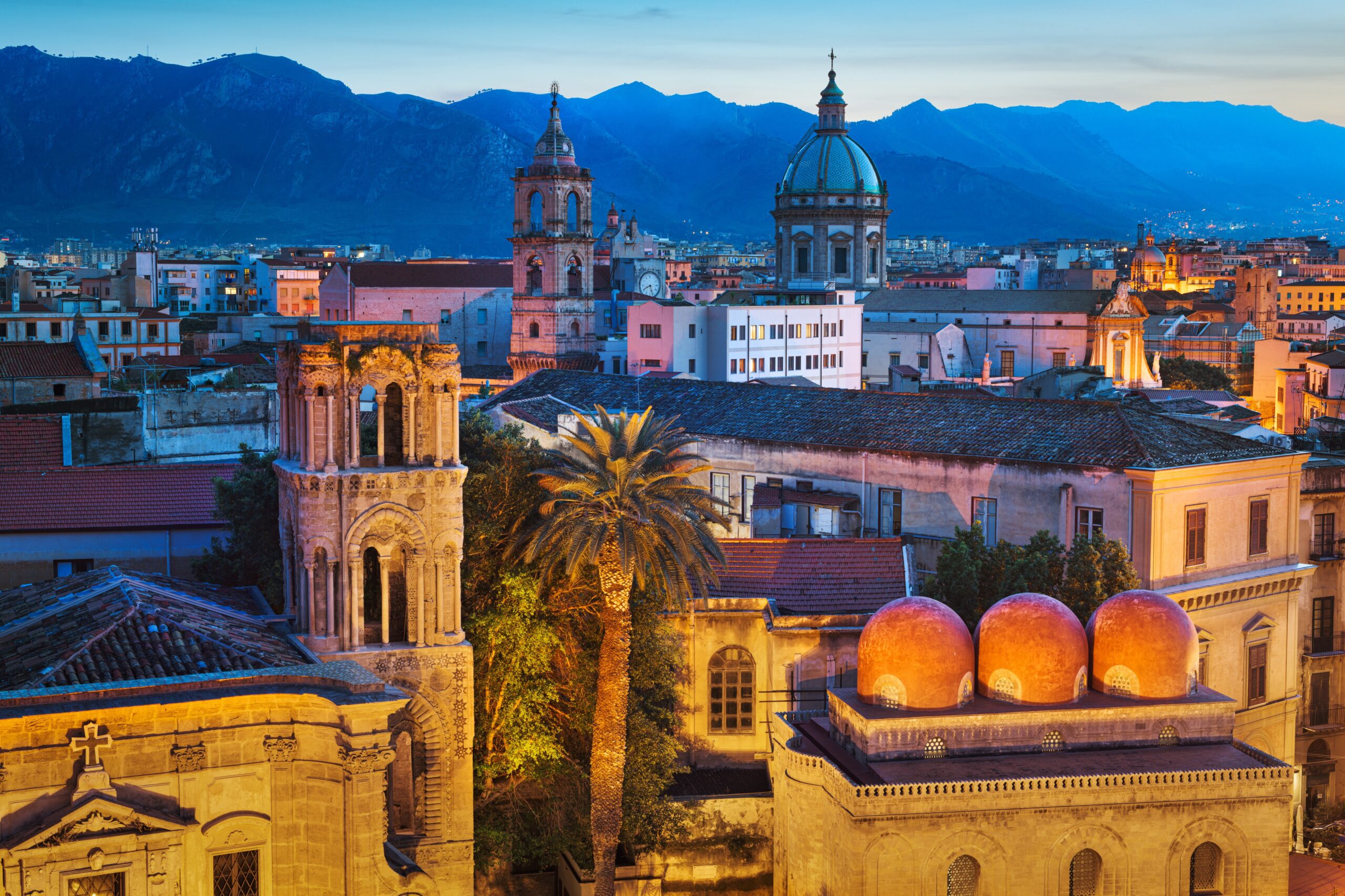




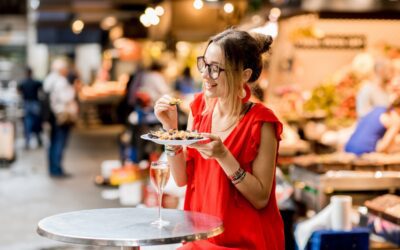
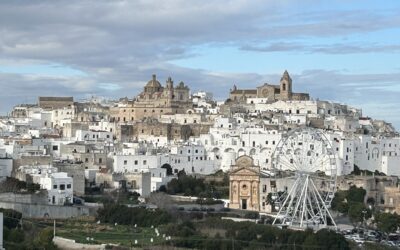
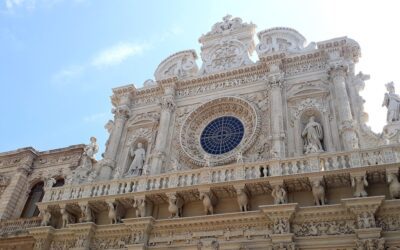
0 Comments
We always strive to use real photos from our own adventures, provided by the guest writer or from our personal travels. However, in some cases, due to photo quality, we must use stock photography. If you have any questions about the photography please let us know.
Disclaimer: We are so happy that you are checking out this page right now! We only recommend things that are suggested by our community, or through our own experience, that we believe will be helpful and practical for you. Some of our pages contain links, which means we’re part of an affiliate program for the product being mentioned. Should you decide to purchase a product using a link from on our site, JourneyWoman may earn a small commission from the retailer, which helps us maintain our beautiful website. JourneyWoman is an Amazon Associate and earns from qualifying purchases. Thank you!
We want to hear what you think about this article, and we welcome any updates or changes to improve it. You can comment below, or send an email to us at [email protected].